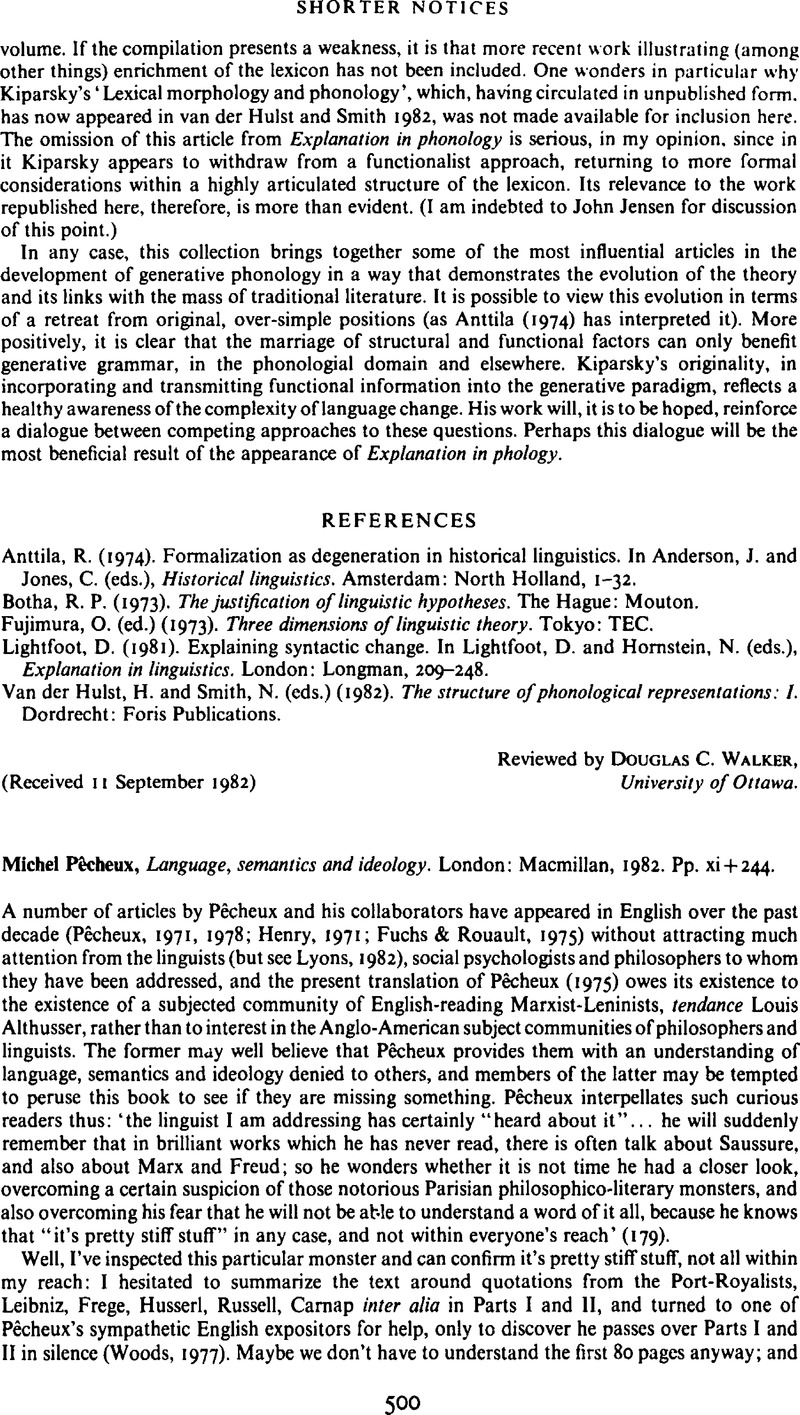No CrossRef data available.
Article contents
Michel Pêcheux, Language, semantics and ideology. London: Macmillan, 1982. Pp. xi + 244.
Review products
Michel Pêcheux, Language, semantics and ideology. London: Macmillan, 1982. Pp. xi + 244.
Published online by Cambridge University Press: 28 November 2008
Abstract
An abstract is not available for this content so a preview has been provided. Please use the Get access link above for information on how to access this content.

- Type
- Shorter Notices
- Information
- Copyright
- Copyright © Cambridge University Press 1983
References
REFERENCES
Althusser, L. (1971). Ideology and ideological state apparatuses. In Althusser, L., Lenin and philosophy and other essays. London: New Left Books. 123–173.Google Scholar
Fuchs, C. and Rouault, J. (1975). Towards a formal treatment of the phenomenon of aspect. In Keenan, E. (ed.), Formal semantics of natural language. Cambridge: Cambridge University Press. 373–388.Google Scholar
Henry, P. (1971). On processing of message reference in contexts. In Carswell, E. & Rommetveit, R. (eds.), Social contexts of messages. London: Academic Press. 77–95.Google Scholar
Lyons, J. (1982). Deixis and subjectivity: Loquor, ergo sum? In Jarvella, R. & Klein, W. (eds.), Speech place and action. Chichester: John Wiley. 101–124.Google Scholar
Pêcheux, M. (1971). A method of discursive analysis applied to the recall of utterances. In Carswell, E. & Rommetveit, R. (eds.), Social Contexts of messages. London: Academic Press. 67–75.Google Scholar
Pêcheux, M. (1978). Are the masses an inanimate object? In Sankoff, D. (ed), Linguistic variation: models and methods. New York: Academic Press. 251–66.Google Scholar
Woods, R. (1977). Discourse analysis: the work of Michel Pêcheux. Ideology and consciousness 2. 57–79.Google Scholar


